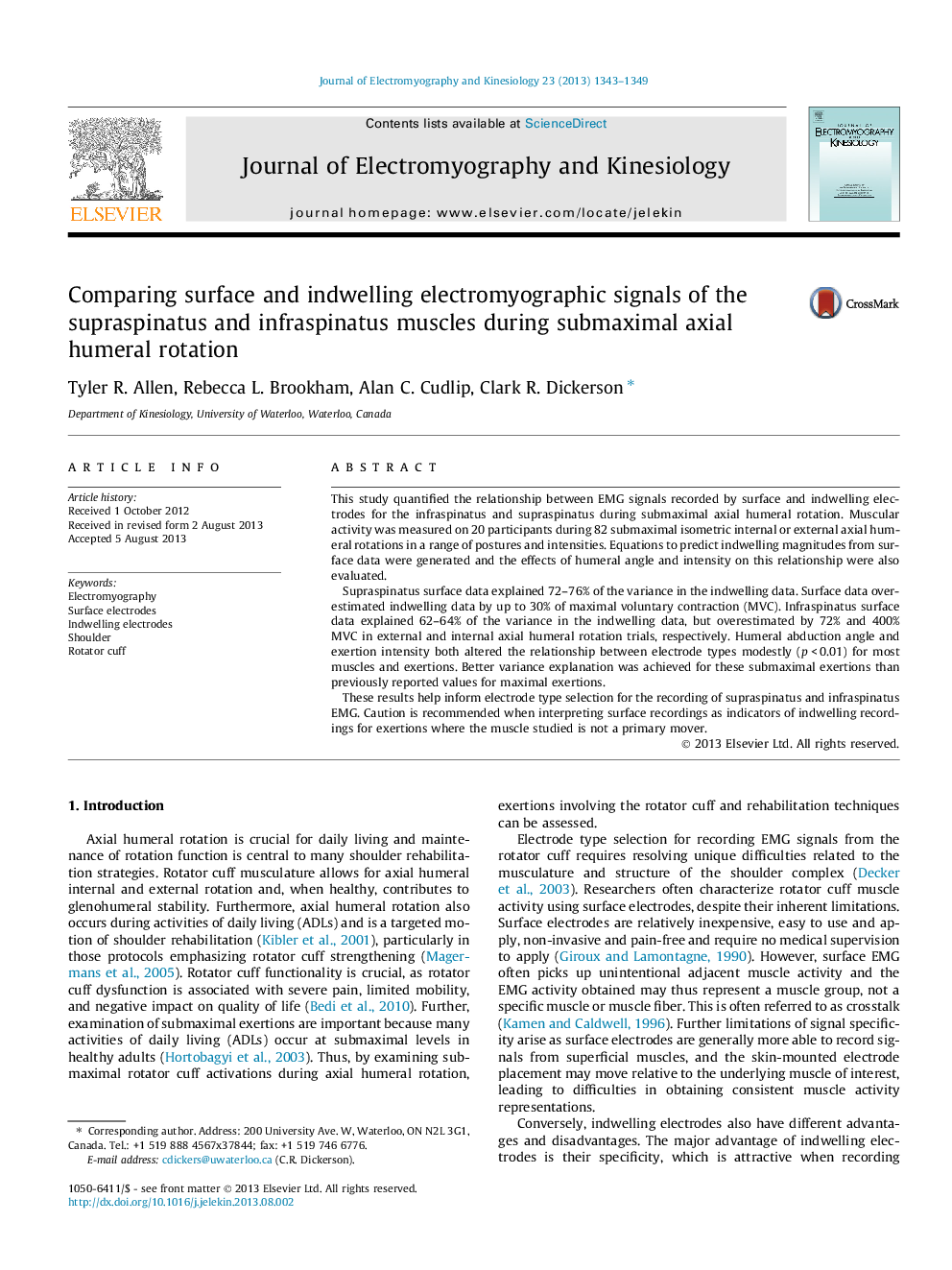| Article ID | Journal | Published Year | Pages | File Type |
|---|---|---|---|---|
| 4064810 | Journal of Electromyography and Kinesiology | 2013 | 7 Pages |
This study quantified the relationship between EMG signals recorded by surface and indwelling electrodes for the infraspinatus and supraspinatus during submaximal axial humeral rotation. Muscular activity was measured on 20 participants during 82 submaximal isometric internal or external axial humeral rotations in a range of postures and intensities. Equations to predict indwelling magnitudes from surface data were generated and the effects of humeral angle and intensity on this relationship were also evaluated.Supraspinatus surface data explained 72–76% of the variance in the indwelling data. Surface data overestimated indwelling data by up to 30% of maximal voluntary contraction (MVC). Infraspinatus surface data explained 62–64% of the variance in the indwelling data, but overestimated by 72% and 400% MVC in external and internal axial humeral rotation trials, respectively. Humeral abduction angle and exertion intensity both altered the relationship between electrode types modestly (p < 0.01) for most muscles and exertions. Better variance explanation was achieved for these submaximal exertions than previously reported values for maximal exertions.These results help inform electrode type selection for the recording of supraspinatus and infraspinatus EMG. Caution is recommended when interpreting surface recordings as indicators of indwelling recordings for exertions where the muscle studied is not a primary mover.
